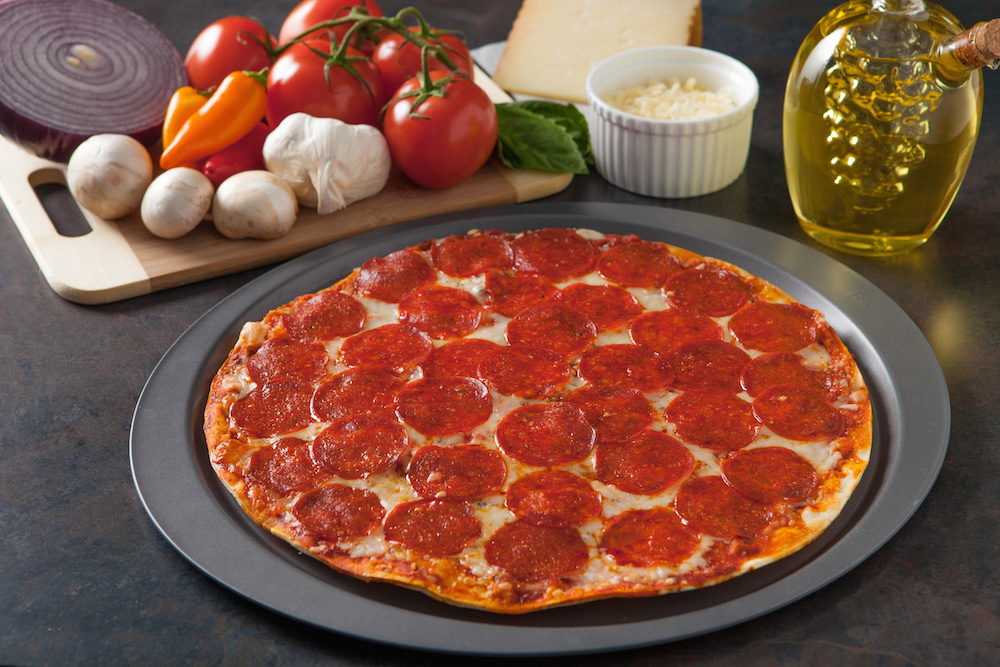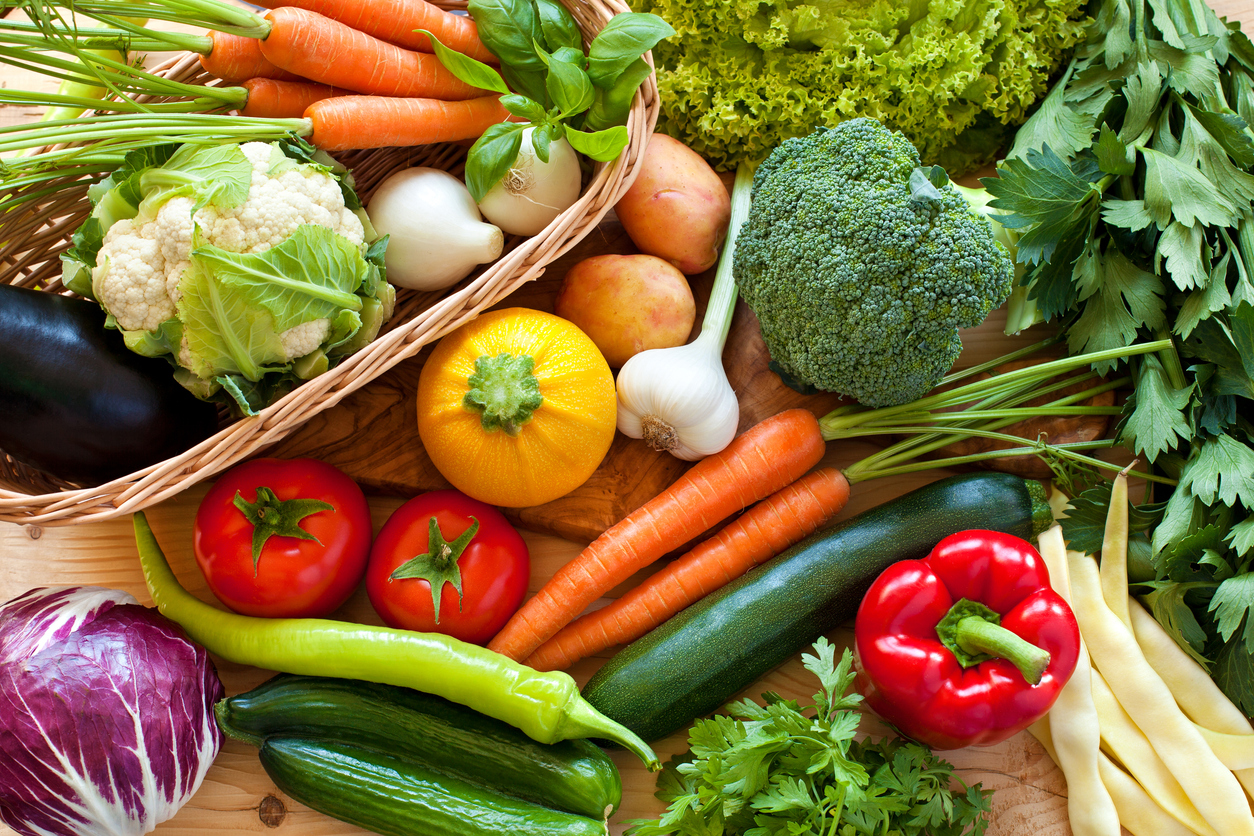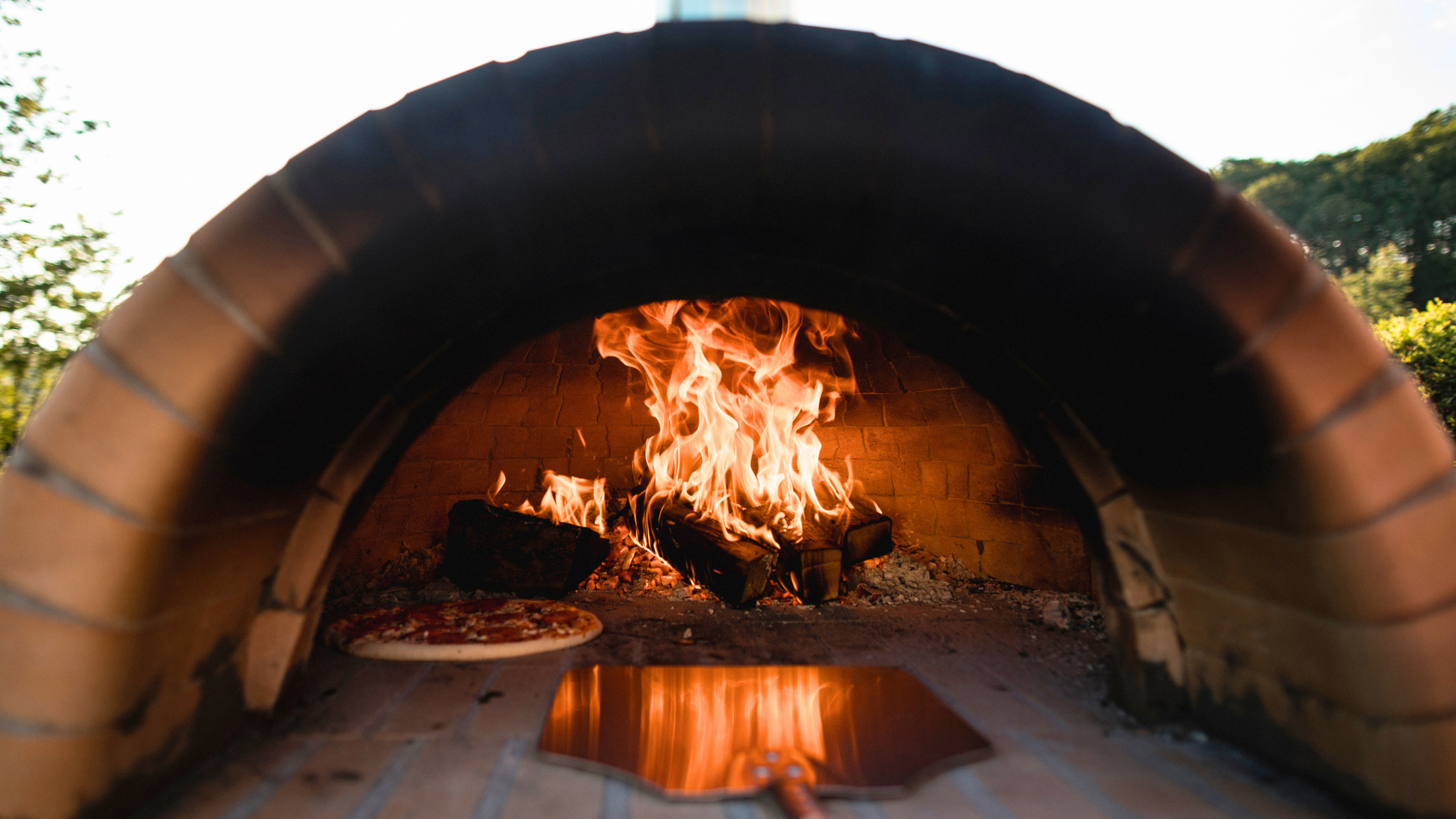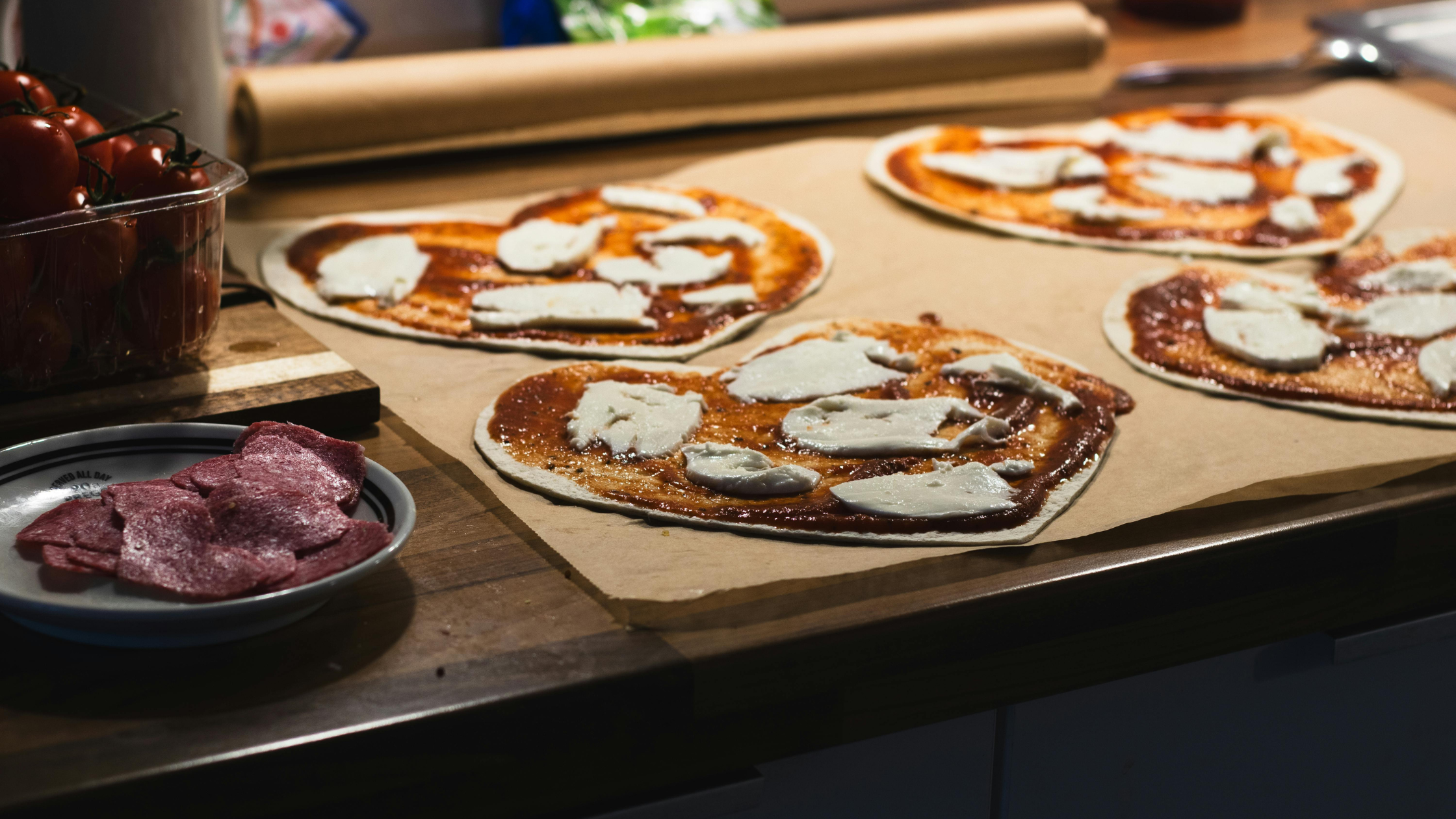Thin-Crust Pizza vs. Thick-Crust Pizza: The Ultimate Showdown!

Thin crust or thick crust pizza? That’s the eternal question we set out to answer! After years of research into the art and science of pizza and consulting with dozens of experts in the fields of pizza history and pizzacraft, we’re ready to reveal our findings.
Disclaimer: We’re not impartial or unbiased, and we’re not pizza scholars; we’re just your friendly neighborhood Dogtown Pizza, and this is the thin crust pizza vs. thick crust pizza ultimate showdown!
Ultimate Crowd Pleaser
If you want to feed a big crowd, bring a big pizza! When it comes to pizza parties, it’s hard to beat Italy, known for inventing both pizza and parties, such as the festivals held throughout the year in ancient Rome. When it comes to crust, thicker is closer to what the crust of those first traditional pizzas looked like. The original pizza was more like a wide loaf of bread covered in toppings, making it somewhat like a modern-day thick-crust pizza.
However, in modern times, technology has advanced, and opinions have changed. A YouGov poll of over 1,000 adults in 2022 found that 47% of the respondents preferred thin-crust pizza, and only 31% preferred thick-crust pizza.
Winner: Thin Crust
Ultimate Party Food
When it comes to party food, pizza can’t be beat! From slumber parties to movie nights, there’s no party like a pizza party because a pizza party doesn’t stop (tip: if it seems like the pizza party might stop, just pop another delicious Dogtown pizza in the oven!). Thin-crust pizza is the ideal party food because of its smaller form factor and portability, plus it’s easy to eat while having a conversation, playing party games, or even dancing!
For a dinner party or other occasions where you’d expect to use silverware and sit still at the table instead of having fun, thick-crust pizza is okay if you can’t find anything else.
Winner: Thin Crust
Ultimate Health Helper
We’re all trying to do what’s best for our health, and we know the most sustainable long-term results come from making small, incremental changes. One easy change to make is eating thin-crust pizza, which has fewer calories than thick-crust pizza because of the thinner crust. We’re not saying thin-crust pizza is a low-carb food, but it is the better option if you’re limiting calories—and our St. Louis style crust is the thinnest, crispiest, most cracker-like thin crust you’ll find in stores.
Another simple change to make is opting for more veggies on your pizza, like tomatoes, mushrooms, peppers, onions, and olives, which all contain important vitamins and minerals we need as part of a healthy diet. Pizza is also an excellent way to lessen meat consumption, either by going full veggie or keeping the meat since the portions of meat toppings on pizza are much less meat than what’s served at a typical meal.
On the other hand, if your dietary plan involves “cheat days,” “treat days,” or just indulging in less healthful options as part of your overall nutritional strategy, it’s hard to feel more satisfied than by eating thick-crust pizza.
The thicker crust will also encourage you to slow down while eating, and eating more slowly can make the whole meal feel more satisfying, which tends to lead to eating less food. With that being said, we’re giving our nod to thin-crust pizza once again.
Winner: Thin Crust
Ultimate Pizza Toppings
Thick-crust pizza has more structural integrity by virtue of its thickness, so it’s able to hold up under vast rivers of sauce, gooey layers of molten cheese and mountains of flavorful toppings piled high. Unfortunately, this superpower—like any other superpower—comes with a weakness: the crust itself.
The density of a thick-crust pizza and the size of the slices means it’s always a showdown between the crust and the toppings, and it’s hard to get the ratio exactly right, but when it’s right, it’s hard to beat.
Thin-crust pizza instead piles sauce, cheese, and toppings onto a thinner foundation, trading away quantity for quality. When your crust is thin, it becomes less of the main character and more of a group participant. Fewer toppings also mean you can more easily experiment with high-quality ingredients in thoughtful combinations to make something magical happen in your mouth.
Case in point: our ever-popular Tomato Basil Garlic Dogtown Pizza with red-ripened tomatoes, fragrant basil, and freshly minced garlic has been a fan favorite since we introduced it—and it’s all-natural!
Winner: Thick Crust
Ultimate Leftovers
Leftover thin-crust pizza is a way to eat more of the food you love, whether you eat it cold, reheated or reimagined into a whole new meal. Leftover thin crust toasted in the oven and topped with a fried egg? Yum! Leftover thin crust chopped up and scrambled with eggs? Yes, please!
Two pieces of leftover thin crust instead of bread on a bacon and avocado sandwich? It’s literally the only breakfast pizza recipe we know that doesn’t have an egg on it, and it’s delicious!
Leftover thick-crust pizza is just wet bread. Yeah, we said it. Somebody had to.
Winner: Thin Crust
Ultimate Flavor
If you want to taste the toppings to their fullest, thin crust is the way to go. The thin crust is basically a delivery system for the sauce, cheese, and toppings, and we wouldn’t have it any other way.
If you want to fill up mostly on bread, you’re going to prefer the flavor of thick-crust pizza. The thickness of even the thinnest thick-crust pizza still manages to dwarf the sauce, cheese, and toppings, so no matter what’s on top, thick crust makes itself the star of the show. If you genuinely prefer the flavor of thick-crust pizza, we’re not going to tell you you’re wrong, but only because taste is subjective, so we technically can’t say anyone is wrong here.
Winner: Tie (but only on a technicality)
Now you may be asking yourself: which type of pizza crust is the winner of our ultimate pizza crust showdown? Thin crust, obviously! If you disagree, we ask you to familiarize yourself with our work and reconsider. Through thick and thin, we’ll be waiting in the freezer aisle!





I like that you talked about how most people like thick crust pizza in the middle states while those that are on the edges are for the thin crust. This just shows how people are different with their choices. I guess I have to provide these two types of pizza for my birthday celebration to cater to those who like thin and thin. We just thought that it would be best to serve pizza because who doesn’t like this type of food.
I totally agree when you said that the type of crust that is better depends on the preference of the person and the type of pizza as well. I just got curious about this because we are going to eat out this weekend. It will be for the celebration of my husband’s promotion at work which he worked hard for three years. Thanks for the information!
One of the things that I love about pizza is that you can pretty much make it however you want it. With most pizza places, they would be able to make it to your needs. Now if I was making a pizza, I would probably go with a thin crust pizza as it’s a bit easier to make.
I thought it was interesting that you mentioned your preference depending on where you live. It never occurred to me that this could be something influenced by region, but more by family. It’s something that I would really like to look into more. Thank you for sharing your thoughts!
I like what you said about how thicker crusts make it possible for more toppings on your pie. Me and my sons love cheese. I think we should order more thick crust pizzas so we can specifically ask for more pizza toppings on our pie.